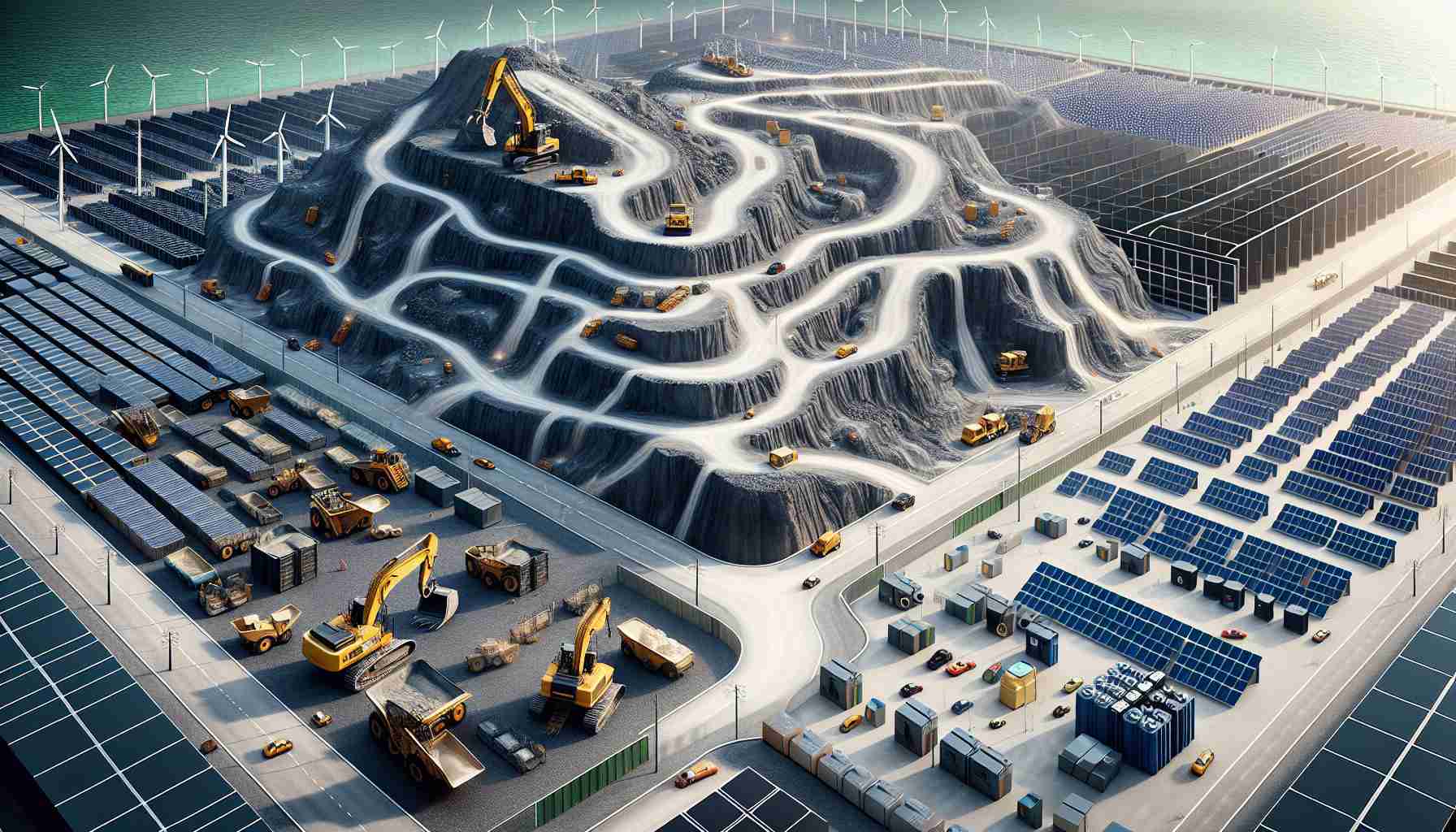In a noteworthy development aimed at bolstering renewable energy capacity in Aberdeen, plans for a substantial battery storage facility at Rigifa Farm have sparked considerable debate, particularly among those connected to the adjacent Leiths Blackhills Quarry. The proposed 49.9MW energy storage system, consisting of 56 battery containers, seeks to harness and stabilize renewable energy sources to support local demand. However, concerns have arisen regarding the operational integrity of the long-established quarry, integral to regional construction efforts.
Leiths, an Aberdeen-based conglomerate involved in quarrying and engineering, has voiced significant apprehensions. Leadership has emphasized the potential impact on their extraction processes, highlighting worries about safety protocols during blasting operations, especially in the event of a battery-related incident. The company’s leadership has asserted the importance of maintaining uninterrupted quarry operations to safeguard jobs and ensure community safety.
On the other hand, proponents for the battery facility argue for its critical role in transitioning Aberdeen towards sustainable energy practices, reflecting a broader commitment to reducing reliance on fossil fuels. The facility is strategically located near the Redmoss substation, ensuring efficient energy distribution.
Despite the opposition, the planning committee’s unanimous decision to advance the project marks a crucial step for the region. They mandated the preparation of a comprehensive fire risk assessment, underscoring the need to address safety concerns while promoting an eco-friendly energy future. This unfolding scenario not only shapes local energy infrastructure but also raises vital discussions on balancing industrial activities with environmental advancements.
FAQ Section
What is the proposed battery storage facility at Rigifa Farm?
The proposed battery storage facility at Rigifa Farm is a significant energy project aimed at enhancing renewable energy capacity in Aberdeen. It is designed to have a capacity of 49.9MW and will consist of 56 battery containers to help stabilize and store renewable energy sources for local consumption.
Why is there controversy surrounding the battery storage facility?
The controversy primarily stems from concerns expressed by Leiths Blackhills Quarry, which is located near the proposed site. The quarry’s management is worried that the battery facility could affect their extraction processes and safety protocols, particularly during blasting operations if a battery-related incident were to occur.
What are Leiths’ concerns about the battery facility?
Leiths has raised significant concerns about maintaining operational integrity and safety at the quarry. They emphasize the risk of potential disruption to their work and the importance of ensuring community safety and job security for their employees.
What benefits do proponents see in the battery facility?
Proponents argue that the battery storage facility is crucial for driving Aberdeen towards more sustainable energy practices. It aligns with the broader goal of reducing dependence on fossil fuels and is strategically located to ensure efficient energy distribution from the nearby Redmoss substation.
What steps have been taken by the planning committee regarding the project?
The planning committee has unanimously decided to move forward with the project, highlighting the importance of preparing a comprehensive fire risk assessment. This reflects their commitment to addressing safety concerns while fostering a transition to eco-friendly energy options.
What implications does this situation have for the local community and environment?
The scenario not only influences local energy infrastructure but also initiates critical discussions about how to balance industrial activities, such as quarrying, with advancements in renewable energy and environmental sustainability.
Key Terms and Jargon
– **Battery Storage Facility**: A system that stores energy generated from renewable sources, allowing it to be used later, thus stabilizing supply and helping meet demand.
– **MW (Megawatt)**: A unit of power that measures the rate of energy generation or consumption; 1 MW equals 1,000 kilowatts.
– **Quarrying**: The process of extracting stone or other materials from a quarry, which is a type of open-pit mine.
– **Fire Risk Assessment**: An evaluation conducted to identify potential fire hazards and recommend measures to mitigate risks.
Suggested Related Links
Aberdeen City Council
Leiths Group
Scottish Government
